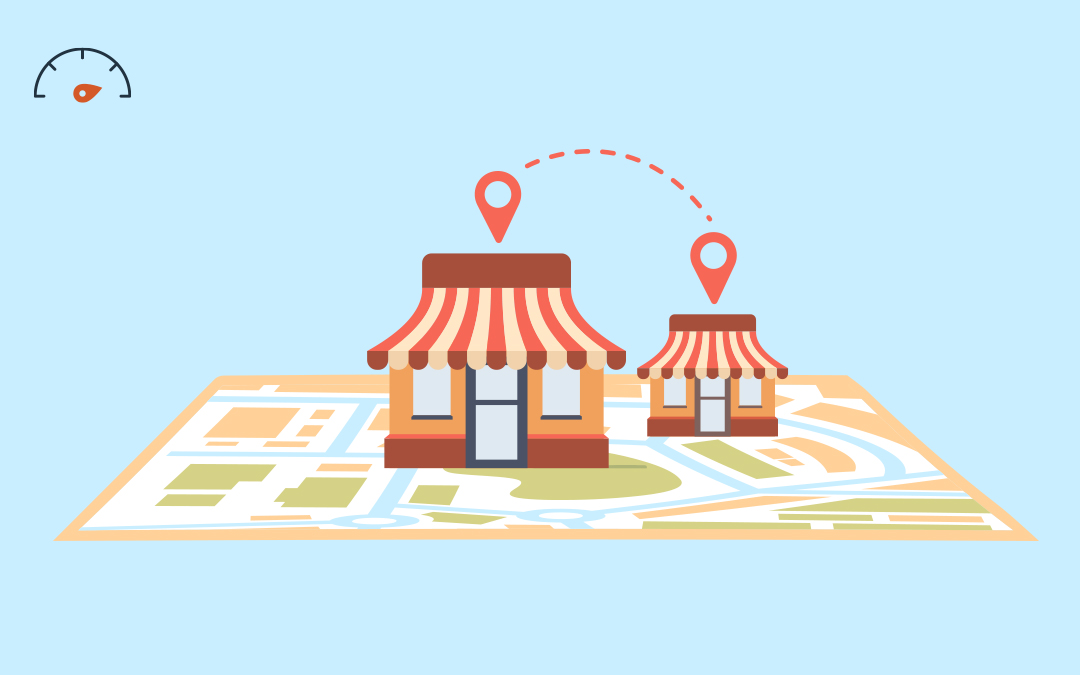Expanding your small business to a second location? From opening day to your first months of operation, here are the ten best ways to market your new business location to current and prospective customers.
Define Your Customer Base
You need to know your target audience, just like you did when you opened your first business location. For the most part, this will be the same as your current customers—after all, you’re just growing, not rebranding.
However, you might want your customers to differ slightly from your first location, like prioritizing your secondary audience more. If that’s the case, you’ll need a detailed profile of that segment’s interests and demographics. This buyer persona will inform all of your decisions moving forward—like where to open your second location and how to market it effectively.
Research Your New Business Location
Using customer insights and your new business goals, research the area around your new location—What’s the demographic of the neighborhood? Who are your nearest competitors? How many of your current customers live nearby? These questions will help guide your new small business marketing efforts, without completely overhauling your current marketing plan.
Create a Brand Guide
Opening a second location for your business means your resources are now split, including your marketing personnel. If you haven’t already, it’s time to create a brand guide to keep your marketing strategy consistent between your business locations, regardless of who’s executing your content. This way, your second location will feel like an extension of your brand rather than a disjointed, standalone business. And your customers will have a similar experience at whichever location they visit.
A brand guide keeps all of your employees (from both locations) on the same page about the “rules” or standards you’ve set for your company’s tone, voice, language, visuals, and more. It also makes training easier if you decide to hire marketing staff as your business expands.
Hurrdat’s Content Coordinator, Lainey Fleener, explains, “When small business owners create their brand guide or hire an agency to do it for them, there are really only three major components that you need to nail: brand identity, voice, and visual guidelines.
- Brand Identity: The foundation of your brand guide, including your brand’s core values, mission statement, and personality. Clearly articulate what makes your business unique and how you want to be perceived in the market.
- Brand Voice: The tone and style of communication that reflects your brand personality. Establish guidelines for writing, ensuring that your messaging is consistent across all channels, including social media, customer service interactions, and physical marketing materials.
- Visual Guidelines: The tangible expression of your brand, including your logo, color palette, typography, and iconography. Define the acceptable usage of these elements, providing clear instructions on how to maintain consistency across all customer touchpoints.”
Build Location Pages on Your Website
SEO can take three to six months to gain traction, so you’ll need to add and optimize location pages on your small business website for both of your stores several months before you plan to open if you want them to start ranking. While you won’t be able to list all the details before your second business location opens, you can still create a page with well-optimized schema markup, your new business address, and a simple message that this location is coming soon.
Your schema markup should include hyperlocal keywords relating to the city, suburb, or neighborhood of your new business’ location to get the page ranking in local searches. Place those keywords in headers and body copy, and list your NAP data (name, address, phone number) in body copy. For the phone number, just list your general business number—you can change it to a specific location phone number once you open.
Then, once your second business location is open, update this location page with your business hours, photos, reviews and testimonials, and other important attributes of your location.
Update Google Business Profile & Local Listings
You’ll need to add a location on Google Business Profile (formerly Google My Business). It can take a few weeks for Google to update your new location data, so adding a new business location to Google also needs to be done before your opening date if you want it to start showing up in Google Maps (and possibly ranking in the Google Map Pack) in time.
After Google Business Profile, create a second location across all of your other local citations—like Yelp, TripAdvisor, Apple Business Connect, social media platforms, and any industry-specific local business directories. Make sure your NAP data is the same as what you used in your Google Business Profile listing so your search ranking isn’t hurt by inconsistent information.
Also check if your additional location is eligible to be listed on any new local directories, like a chamber of commerce’s business directory. If your new business location is in a different city than your first store, you can apply to have your second business added.
Need help getting your Google Business Profile and local citations seen by more customers? Try Local Search Fuel’s affordable Local SEO Starter Package, which includes a local business listing optimization across 80+ popular directories done by local search experts.
Earn Reviews Early
Reviews are a top local search ranking factor—specifically the quantity, quality, and recency of your reviews. Before you open a second location for your business, you obviously can’t collect legitimate reviews for that location since your customers won’t have an experience to write about. That’s why you should push for customer reviews as soon as your second business location opens—preferably at your grand opening or soft opening event.
One way to earn new Google reviews for your second location is to create QR codes you can post around your stores that link to your corresponding review listings like Google Business Profile or Yelp. Keep these QR codes available over time–after all, collecting reviews is just as important for maintaining your new business location as it is for generating word-of-mouth in the beginning. After any events you hold at this location going forward, you should also send out an email thanking your customers for attending and asking for a review if they enjoyed themselves.
Run an Email Marketing Campaign
Email marketing has the highest ROI of any marketing channel, making it a valuable way to advertise your second business location to people who are already “bought into” your business. This audience will likely be easier to convince to visit your second location than brand new prospects.
Send the initial announcement about your new business location to your entire email list, along with any promotional discounts or special event details for the new location before it opens. A blast email will help you announce your grand opening or soft opening once you know the date. And newsletter emails can keep your customers updated on the progress at your new business location with photos and videos.
When your second business location opens, segment your email list with customers specific to each location. You can do this by adding a field to your email signup form where customers can select their closest location. Use the email capture strategy that’s worked well for your initial email list, then send location-specific news and deals to the right people.
Leverage Social Media
Your social media accounts will be a great place to promote your progress photos, introduce any new staff you’re hiring, and create good word-of-mouth buzz before and after you open your second business location. To reach a wider audience, you should post a mix of videos, long-form text, and photos across a variety of social media platforms.
You should also take advantage of user-generated content (UGC). You already have a group of loyal customers who supports your small business, so simply ask them to spread the word about your new location. Incentivize their help with an exclusive discount or free promotional item they can redeem at your new business location.
Adjust Your Geo-Targeting
If you have any paid ads running as you open a second location, you’ll need to adjust your targeting to account for the new area. You should refine geo-targeting on ads ran from platforms like Facebook, Instagram, Twitter, and Google.
Expanding the geographical area your ads reach might increase your cost, so make sure your budget can handle the increase before increasing your range. If the cost of paid advertising is too much for your small business at the moment, skip this strategy and focus more of your efforts on your organic marketing channels.
Use Traditional Marketing for Your Second Business Location
Your second business location is a physical place you want people to visit, so why wouldn’t you leverage some in-person marketing in the area?
As you near your opening date, post flags, flyers, banners, billboards, and other branded signage announcing an “opening soon” or “grand opening” message to catch attention. Post these in/near your first location, and ask business owners around your second store if you can post them in/around their shops as well. Finally, contact your local news station to run a news release or feature story on your opening.
Need some extra help as you’re opening a second location for your business? Local Search Fuel by Hurrdat offers affordable local search starter deals, as well as other local SEO services like our convenient bundled Local SEO Starter Package and small business website development to help small business owners start off on the right foot. Get started today!

Stefanie Vanderbeek
Stefanie Vanderbeek is a content strategist and writer who specializes in long-form digital content and website SEO optimization. Stefanie earned her Bachelor of Journalism from the University of Nebraska-Lincoln in Advertising and Public Relations in 2021. In her free time, you can find Stefanie reading, deep diving into video game lore, singing in her professional vocal group, or traveling the world!
